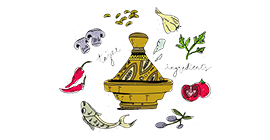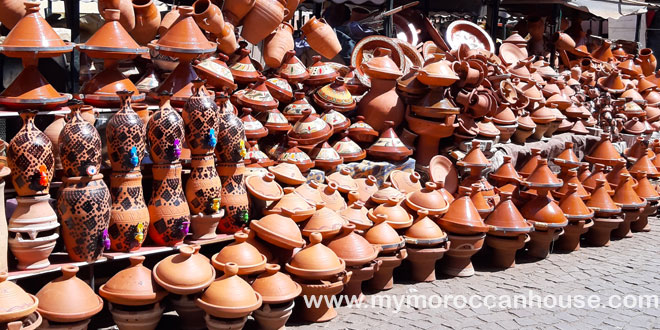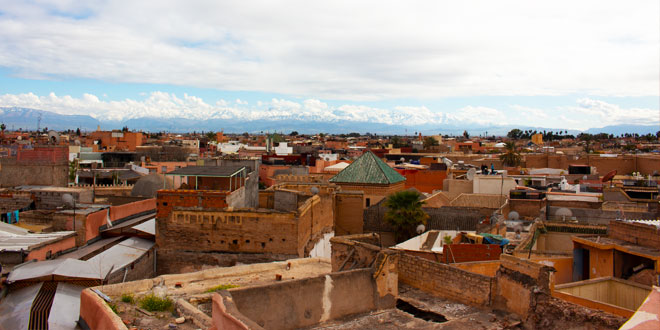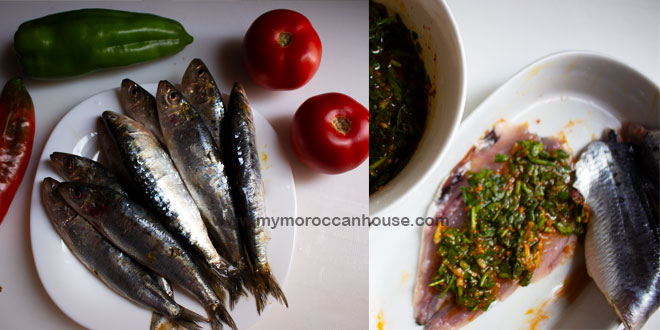You have reached this interesting post as you might be among those who have asked the following questions: is January a good time to visit Morocco? What is Morocco like in January? What is Marrakech like in January? What is best time to visit Morocco?
In general, January is a great time of the year to discover and explore the charming land of Morocco. Winter is usually mild in January. In fact, January is the coldest month of the year; however, temperature during the day is very comfortable. Morocco has such different climates as the Mediterranean, oceanic and continental type, a fact that allows for a great scope of outdoor activities and adventures.
Visiting Morocco in January
Morocco has approximately 1300 km of coastline overlooking the Atlantic Ocean which is an excellent spot for beach and water sports enthusiasts. The winters are mild, and the summers particularly hot and beautiful. The only exception is the month of August near Essaouira and Agadir can be cool due to humic winds that blow almost every day. Between May and August, it is also very likely that a thick fog will form in the morning, but no worries as it quickly goes away way with the sun.
The rainy period extends from November to March. If you want to swim, know that the waters of the Atlantic are cool all year round, even in the height of summer. It may therefore be wise to bring a light suit.
Weather in Morocco in January
Morocco rejoices such various climates as the Mediterranean, oceanic and continental climates, with generally mild winters and hot summers. Inland, the climate is drier, and in the mountains, the climate is more of a continental type. In Marrakech, temperatures may vary between 19°C in winter in January to reach 37°C during the summer months.
Thanks to high luminosity and temperatures that can reach 19°C in winter in Marrakech, Morocco is a destination that can be explored all year round except in summer when the heat is intolerable.it all depends on the type of trip you are planning. If you are planning a hiking trip, summer will be a favorable season in the Rif and the Atlas. If you prefer to avoid the stifling heat of summer, pick a trip to Morocco in spring or fall.
- On the Mediterranean coast , the climate is quite mild in winter with some rain and the summers are rather dry, hot and sunny. In January, the thermometer will be close to 17°C while in summer, it will be closer to 30°C.
- On the Atlantic coast, the climate is almost identical with 22°C in Agadir in January and 30°C in August. For swimming, the water temperature is cool and does not exceed 21°C in summer. The sea temperature is identical on the immense beaches of Essaouira, a destination known by surfers thanks to its spots with beautiful waves.
- In Marrakech , the climate is warmer, especially in summer when temperatures can exceed 40°C. Avoid this period to discover the city, but prefer the cooler intermediate seasons.
- To refresh yourself, head for the mountainous regions of the Atlas or the Rif where you can make beautiful hikes. The rains in summer are quite low. These mountainous regions should be avoided in winter, as it can be cold there and snow is often present. You will also find ski resorts in the Atlas with in particular the resort of Oukaïmden located 80 km from Marrakech.
The climate in January in the different cities of Morocco
Visiting Marrakech In January
In January, Marrakech enjoys good sunshine of about 7 hours a day with an estimated number of rainy days for this month at 7. You may be watered from time to time.
The average temperatures are between 5°C and 19°C but be aware that depending on the year they can go down to -2°C and go up to 27°C.
Visiting Agadir in January
In January, Agadir enjoys good sunshine of about 8 hours a day with an estimated number of rainy days for this month at 6. You may be watered from time to time.
The average temperatures are between 7°C and 22°C but be aware that depending on the year they can go down to 2°C and go up to 31°C.
Casablanca in January Visiting in January
January, Casablanca benefits from a rather weak sunshine of about 5 hours per day with an estimated number of rainy days for this month at 7. You may be watered from time to time.
The average temperatures are between 11°C and 18°C but be aware that depending on the year they can go down to 5°C and go up to 29°C.
Visiting Chefchaouen in January
In January, Chefchaouen benefits from a rather weak sunshine of around 5 hours per day with an estimated number of rainy days for this month at 7. You may be watered from time to time.
The average temperatures are between 11°C and 18°C but be aware that depending on the year they can go down to 3°C and go up to 24°C.
Visiting Essaouira in January
In January, Essaouira enjoys good sunshine of about 8 hours a day with an estimated number of rainy days for this month at 6. You may be watered from time to time.
The average temperatures are between 11°C and 19°C but be aware that depending on the year they can go down to 4°C and go up to 29°C.
Visiting Fez in January
In January, Fez enjoys a rather weak sunshine of about 5 hours per day with an estimated number of rainy days for this month at 7. You may be watered from time to time.
Average temperatures are between 5°C and 16°C but be aware that depending on the year they can go down to -8°C and go up to 32°C.
Visiting Ouarzazate in January
January, Ouarzazate enjoys good sunshine of around 7 hours a day with an estimated number of rainy days for that month of 2. You should be dry!
Average temperatures are between 3°C and 18°C but be aware that depending on the year they can go down to -4°C and go up to 25°C.
Festivals and Celebrations in Morocco in January
January 1st – New Year’s Day
January 11th – Proclamation of Independence
January 12 and 13 – Yennayer, the Amazigh New Year
4 Places in Morocco to Visit During Your Winter Holidays
Oukaimeden
Thrill-seekers will certainly find their happiness in Oukaimeden, a ski resort located about 75 kilometers from the ocher city and at 3200 meters above sea level. This station includes ski lifts, including drag lifts and a chairlift. More than 20 ski slopes are available to visitors to practice all kinds of winter sports. Several tourist establishments are available around Oukaimeden. You can even move to Marrakech to enjoy the city’s mild climate.
Agadir
An important fishing port in Morocco , Agadir owes its fame to its fine sandy beaches and sunshine for about 10 months a year!.
Average temperatures are between 7°C and 22°C in January, they can go down to 2°C and go up to 31°C in some years.
Ait-Ben-Haddou
The Aït-ben-Haddou kasbah is located in the Ouarzazate region and more precisely in the Ounila valley. A key symbol of southern Moroccan architecture, this building brings together a set of traditional houses built with earth. The Aït-ben-Haddou kasbah has also been the filming location for several films and series, such as Lawrence of Arabia, Babel and Game of Thrones season 3. Classified as national heritage, the Aït-ben-Haddou site has also been on the UNESCO heritage list since 1987.
Michlifen
Michlifen is a ski resort which is less than 20 kilometers from Ifrane and which opened its doors in 1950. Nestled at an altitude of 2000m, this pearl of the Middle Atlas is located in the middle of a vast cedar forest. Michlifen opens its doors between mid-November and the end of March each year. A total of 5 runs are available to novices and experienced skiers wishing to rediscover the joys of skiing and winter sports in general. A hotel is available on site as well as many inns and guest houses a little further from Michlifen towards Khenifra and Ifrane.
Best Places to Visit in Morocco
| January | Marrakesh Marathon (Marrakesh) | |
| February | Moussem of Sidi Ben Aissa (Meknes) | fantasias (charges of horsemen firing muskets), fairs, songs and dances |
| March | Almond Blossom Festival (Anti-Atlas) | local folklore with songs, dances, theater and storytelling |
| March | Marathon of the Sands (Ouarzazate) | Saharan Marathon |
| April | Sufi Culture Festival (Fez) | festival hosts various events including films, lectures and concerts by Sufi musicians from around the world |
| April | Jardin’art (Marrakesh) | temporary gardens, shows inspired by the art of gardening and lectures on botany |
| June | Gnaoua and World Music Festival (Essaouira) | concerts by Moroccan and foreign artists and art exhibitions |
| June | Cherry Festival (Sefrou) | Folk music, art exhibitions, parades, fantasias and sports competitions mark the picking and crowning of the queen of cherries. |
| June | Fez Festival of Sacred Music of the World (Fez) | films, debates, concerts, events |
| July | Popular Street Arts Festival (Marrakesh) | typical marrakchi event |
| July | Festival d’asilah (Asilah) | cultural event: shows, workshops, concerts, fantasias and exhibitions |
| December | International Film Festival (Marrakech) | this festival sees stars from all over the world parade on the red carpet, from Hollywood to Bollywood |
What Is so Special About Morocco? Reasons Why You Should Visit Morocco
Morocco is a land of glamorous and vivid contrasts. The gateway to two continents, it is a country of breathtaking landscapes, rich in history and heady with magnific scents and spectacular sights.
While the countryside is home to old traditions and diverse peoples, the ever-growing urban centers boast incredible new architecture together with the old, and activities to suit all modern tastes.
Morocco’s diverse geography, multicultural atmosphere, and rich history make it a mesmerizing country.
Its towns offer a striking contrast of ancient kasbahs, mosques and souks and modern architecture, with a
mix of Berber, Arab and African peoples.
In the crowded ancient medinas, young men in designer jeans haggle over cell phones alongside traditionally dressed women shopping for housewares.
In the fertile countryside, a farmer riding on a goat is as common a sight as a television satellite perched on a mud-brick roof.
Moroccan culture is extremely rich and difficult to pigeonhole. Moroccan landscape includes beaches, mountains, lakes, forests, and deserts.
Morocco is a unique blend of Arab, African, and European ways of life, and the Moroccans wouldn’t have it any other way.
Moroccan cuisine is rich and varied, owing to a variety of cultural influences. Meat is well-spiced and lean, vegetables are fresh and abundant, and everything is permeated with spices.
Moroccan cooking is quite labor-intensive and dishes are pleasingly presented as well as meticulously prepared.
Beef, lamb, fish, and chicken are all popular and used in a variety of dishes. Pigeon and turkey are also available, and the seafood in the coastal cities is not to be missed.
Meat is prepared according to Islamic halal regulations.
Rice, semolina wheat, and barley grains are used for a variety of dishes. A wide range of spices is used, including cumin, saffron, paprika, ginger, cinnamon, red and black pepper, and a special mixture called ras al-hanout is widely used in Moroccan cuisine.
A typical Moroccan meal starts with something fresh or cooked salads, olives and pickled vegetables and bread, and sometimes a cold beverage. The main course is then brought out, usually in a large pot, or tajine.
Moroccans will either eat from the main dish with their hands or using spoons, or serve food on to individual dishes.
After the main course is through and plates are removed, various fruits are arranged on the table, and mint tea is served, sometimes with Moroccan cookies.



